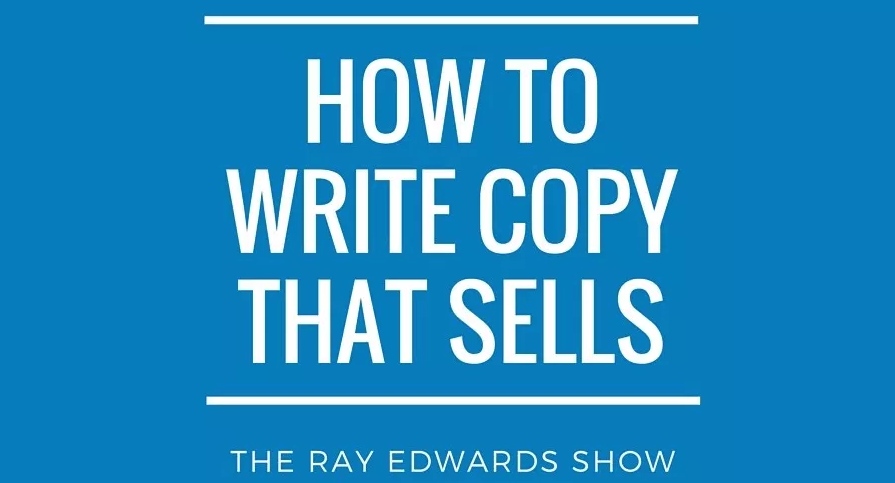I'm a huge fan of great copywriting and write about it regularly, as well as satirically.
This is a summary of what I learned from Smart Passive Income episode 327 with Ray Edwards as a guest.
Ray Edwards is author of the website and training series called Writing Copy that Sells. He uses a couple of frameworks, both to help structure a sales letter and to guide you through his version of the customer journey.
The P.A.S.T.O.R. framework
P.A.S.T.O.R. is on the one hand, a metaphor, showing the way you can guide a customer through a purchase decision, and secondly, an acronym for the major sections of your copy.
Here is what each letter stands for.
“P” is for PROBLEM
Begin by identifying the problem you are solving. Describe it in great detail. The more accurately you can describe the problem in terms they relate to, the more the reader will feel you must have an answer to it.
For example, if you're writing about weight loss, you might describe the problem this way:
“You've tried every fad diet that’s come along. You’ve started and stopped a dozen different exercise programs, perhaps joined several different gyms, but the truth is you just can’t seem to take the weight off (or keep it off.) Perhaps you’re even feeling a little disgusted with yourself and your inability to control your eating and your weight. You feel like no matter what you try, it’s not going to work.”
You're not judging; you're describing the experience as it currently is. This means you have to understand their experience as it currently is. You have to know your audience and what they are thinking. As Robert Collier said, you have to “join the conversation that is already taking place in the reader’s mind.”
“A” is for AMPLIFY
Amplify the consequences of not solving the problem. Make clear the cost of not obtaining the outcome of buying your product or service.
For example, if selling a personal development program:
“Write down your average income over the last 12 months. Then write down what you want your average income to be. Suppose your current income is $5,000 a month, and your goal is to make $20,000 a month. Your "gap" is $15,000 a month. You're paying $15,000 a month to not solve this problem.”
“S” is for STORY and SOLUTION
Now, share a story of how the problem can be solved. It might be someone elses story, or your own.
It can be simply a description of a solution: Bob, the business owner on the edge of bankruptcy, whose family lost faith in him, and who out of desperation tried one last idea that saved his business.
The story must be true. If there is no story, go find one.
“T” is for TRANSFORMATION and TESTIMONY
You're not selling "stuff". You're selling "transformation", and here is where you should bear that in mind.
People buy a better version of themselves. People don't buy a fitness program; they buy a fit version of themselves.
Offer testimony, real-life stories of people who made the transformation you're teaching. The best infomercials are more than two thirds testimonials.
Bear in mind the questions people are asking when you are selling coaching, consulting or instruction.
- Has this person been able to do what they are describing for themselves?
- Has this person been able to teach other people to achieve the results they are describing?
- Will this person be able to teach me how to achieve these results?
“O” is for OFFER
So far you've defined the problem, clarified the cost of not solving it, told the story of the solution, and helped your reader visualise the transformation through testimonials. Now describe what is for sale.
Lay out your offer. You can even specify it clearly, like "This is what you get."
Focus 80% of the copy on the transformation. The deliverables should take up only 20%. Tie the deliverables back to the transformation and benefits.
For example, instead of writing that the buyer will receive “8 DVDs, each containing a 45 minute workout session”, you might instead write that they will receive “8 DVDs that each contain a body-sculpting, fat-burning transformational work out that will help you craft the lean muscle you really want.”
“R” is for RESPONSE
Copy tends to be weakest here: the response request. Ask the customer to buy. Don't be shy. Tell the customer exactly what to do to get your program, consulting services, your book etc. Remind them why it's important to do so.
Write something like: "You're at a decision point. You can either continue down the path of least resistance, the path you've been travelling, or you can choose the road less travelled. The path of least resistance will probably get you the results you've always achieved. But if you want something different, you'll have to choose a different path. Make a new choice. Get new results."
Then write specific directive copy telling them what to do next: "Fill out this form. Send $2,000 via PayPal to me. Get the entire packaged shipped to you in a week."
You might shy away from strong language like this, but if you truly believe you have a solution, why would you not be as direct as possible? Wouldn't you be doing them a disservice to deny them the solution?
The 12 step customer journey
Ray makes regular reference to the Hero's Journey. It's no surprise that his Buyer's Journey is also a version of this journey!


